A paint thickness gauge or paint meter is a tool used to measure the thickness of a coating on a surface.
Paint thickness gauges are common in the automotive sector where they are used to determine painting thickness on different panels. But they are also used in many other industries for system maintenance, quality assurance and other applications.
How A Paint Thickness Gauge Works
Some paint thickness gauges use a permanent magnet to measure paint thickness. Once you place the gauge on the surface, a magnet attaches to the surface.
For this type of gauge to work, the surface underneath has to be a ferrous (magnetic) material like steel.
Increasing tension is applied to a spring connected to the magnet. A sensor then measures how much force it has taken to pull off the magnet. This correlates to paint thickness – the more the required force the thicker the paint.
The gauge gives a readout in μm (micrometre/micron).
More advanced paint thickness gauges use either electromagnetic induction or eddy currents.
Electromagnetic induction is used to measure thickness of non-magnetic coatings on magnetic surfaces such as steel.
A coil system generates an electromagnetic field that is affected by the magnetic substrate. By measuring changes in the magnetic field, the gauge can determine paint thickness.
Eddy currents are used to measure the thickness of non-conductive coatings on non-magnetic metal surfaces such as aluminium or non-ferrous stainless steel.
A coil carrying a high frequency alternating current causes eddy currents in the substrate. These eddy currents have their own magnetic fields.
The probe measures the nature and strength of the magnetic fields to determine paint thickness.
Many paint thickness gauges today have a 2-in-1 design: they can measure via magnetic induction or eddy currents, giving you more versatility.
There are gauges that don’t rely on magnetism at all. A good example is ultrasonic gauges. These are used on non-metal surfaces such as plastic, wood and fiberglass.
Ultrasonic paint thickness gauges work by sending a pulse through the paint. They use the reflected pulse to determine paint thickness.
- Read also: Best digital force gauge
Uses And Benefits Of A Paint Thickness Gauge
As I mentioned, paint thickness gauges are used across a wide range of industries. Here are some of their most common applications as well as their biggest benefits.
- Car detailers use a paint thickness gauge to determine how much paint they have to work with. If the paint is thin, polishing off too much can expose the lower paint layers.
- You can use a paint thickness gauge when you are inspecting a used car to tell which panels have undergone repairs. Inconsistency in paint thickness is an indicator of a repair having been done because of corrosion, an accident or some other issue.
- In industries, manufacturers use these gauges to make sure their products achieve required standards.
- Paint thickness gauges can also be used for system and machine maintenance. Thinning paint can indicate deterioration. This is especially important for parts and surfaces that need to be protected from corrosion.
What To Look For When Buying A Paint Thickness Gauge
1) Type of gauge
- Permanent magnet gauges: These are affordable, easy to use and don’t require calibration. They are also easy to carry around, with most being the size of a pen. On the downside, they are not as accurate as other types of gauges. They can only be used on magnetic surfaces.
- Magnetic induction gauges: The best gauges for measuring the thickness of paint on magnetic surfaces.
- Eddy current gauges: The best choice for measuring thickness of paint on non-magnetic surfaces such as aluminium.
- Combined paint thickness gauges: These can measure with magnetic induction or eddy currents depending on the type of surface. They are the best types of paint thickness gauges for most people.
- Ultrasonic gauges: These are more modern and more accurate than other types of meters. Though expensive, they are the best for professionals who want a high level of accuracy.
2) Accuracy
Generally, the more you pay for a paint thickness gauge, the better its accuracy.
Because environmental conditions can affect accuracy, look for a gauge that can be calibrated for different conditions or one that can tolerate different temperature and humidity levels without compromising accuracy.
If you want precision accuracy, look for gauges that come with sample films or metals for calibration.
3) Measurement range
Before you buy a paint thickness gauge, check the minimum and maximum temperature it can measure.
The ideal range will depend on what kind of measurements you expect to find in your field of work.
For example, most new cars have a thickness of about 120 microns. If you are planning to use the gauge for auto detailing, make sure it can measure less than 100 microns.
If your work involves extra-thick coat of paints – e.g. 2mm or more – make sure the gauge can measure 2,000 microns or more.
4) Continuous reading
With some gauges, you have to take reading one by one. This is okay if you use the gauge only occasionally for short periods.
But if you use it a lot, a gauge with continuous reading will be much faster and easier to use. It can take continuous readings without you having to lift the gauge.
The best gauges have both modes: spot reading for measuring specific areas and continuous reading for measuring a continuous surface.
5) Alarm
Most paint thickness gauges offer the option of setting an alarm that will sound if reading go below or above a specified threshold.
This is useful for quickly determining which areas have a problem.
6) Display
Look for a gauge with a large and bright display that’s easy to see even when you are in the sun.
A backlit display is best as it allows you to use the gauge in all light conditions and greatly improved visibility.
7) Data storage and transfer
Finally, look for a paint thickness gauge that can store reading for future access. You should also be able to go through previous readings and delete those you no longer need.
Some paint thickness gauges offer the option to transfer data to your computer using a USB cable. This is handy if you need to analyse the readings further on a computer or share them with colleagues.
The Best Paint Thickness Gauge Reviews
1. ERAY Car Coating Paint Thickness Gauge
This is a 2-in-1 paint thickness gauge with two probes for different types of surfaces.
F Probe: This uses magnetic induction to measure thickness of coatings on iron, steel and magnetic alloyed steel. It not only measures thickness of painting but also other types of non-magnetic coatings including varnish, rubber, copper, zinc, chrome and aluminium.
N Probe: This one uses the eddy current technique. Use it to measure painting and coatings on non-magnetic materials such as brass, zinc, aluminium and non-magnetic (austenitic) steel.
The gauge has a measuring range of 0 to 2,000μm (2mm, 78.7mils) and an accuracy of ±(2.5%+1um).
The minimum curvature radius for the surface being measured is 5mm for convex surfaces and 25mm for concave surfaces. The minimum measuring diameter is 20mm.
The gauge has a continuous mode for when you need to measure a large surface and a single reading mode for taking one-by-one readings.
Other settings include data storage in multiple groups, different alarm settings for different groups and calibration settings (zero or multi-point) for each group.
Data is displayed on a backlist LCD display. A 7-button control panel underneath the screen allows you to adjust settings, power on/off, recall previous readings and delete readings.
If you need to export data to a computer, the gauge has a USB interface.
2. Digital CEM DT-156 Paint Coating Thickness Meter
This is another good choice if you are looking for 2-in-1 paint thickness gauge with magnetic and eddy currents measurements.
The magnetic function is handy for magnetic substrates while the eddy currents feature is useful for measuring thickness of coatings on non-magnetic surfaces.
The measuring range is 0 to 1250µm (49.2mils, 1.25mm). This is slightly lower than ERAY gauge above but still wide enough for most people’s needs.
Like the ERAY gauge, it also comes with two measuring modes: continuous and single.
It also has two working modes: direct mode where data is deleted once you turn off the device and group mode where data is saved when you turn off the gauge.
The gauge stores up to 400 readings. You can delete previous readings to clear up space. Alternatively, transfer the data to a computer using the USB port at the top.
The backlist LCD is a bit small but it’s easy to see in all light conditions.
The gauge weighs just 100g. So it’s easy to carry in your pocket or bag. It comes with a protective carry case.
Other accessories include calibration foils, iron and aluminium substrates for calibration, a USB cable and two AAA batteries.
3. Amgaze Digital Ultrasonic Thickness Meter Tester
This one is a great choice if you are looking for a highly accurate ultrasonic paint thickness gauge. You can use it on different surfaces, including non-metal ones like glass, ceramic and plastic.
Make sure you read the user manual because there are many specifics on what you can and can’t measure.
On some surfaces, you may need to apply a gel to get accurate measurements.
You also need to adjust sound velocity depending on the material you are measuring. For instance, if it’s glass, set the velocity to 5440m/s. For plastic, it is 1440m/s-3000m/s depending on the type of plastic.
Once you set specific settings, the gauge will retain them even after you turn it off.
4. Prodig-Tech GL8s Digital Car Paint Layer Thickness Meter
The Prodig-Tech GL8s paint thickness gauge is designed specifically for use on cars. It works well on cars with a steel, aluminium or galvanized steel body.
It displays readings on a small screen that can sometimes be hard to read.
Unlike the other gauges, the GL8s has a wired probe that makes it easy to measure thickness on hard-to-reach surfaces where the gauge body wouldn’t fit.
One of the most useful features is the Measurement assist. When you take a measurement the display shows a message in addition to the usual readings.
The messages tell you what the readings mean. They are handy for users who cannot deduce the meaning of different readings.
Here are the messages:
- LITTLE – the paint layer is thin
- LAC.OK – the paint thickness is as expected. It’s most likely the original paint.
- 2xLAC! – there are two paint layers, meaning there might be some repair work done on the car.
- PUTTY! – means there’s car putty, indicating possible repair work.
The manufacturer is careful to note that these messages are not proof that there are body repairs. If you are using this to evaluate a used car, use the messages as a starting point to find out more about the car.
5. Blue Technology P 11-S-AL Paint Coating Thickness Meter
Our final pick also uses a wired probe, making it handy for measuring uneven and hard to reach surfaces.
Like the Prodig-Tech GL8s, it’s designed mostly for car detailers. It measures paint thickness on aluminium, galvanized steel and steel bodies.
The measuring range is 0 to 1990µm. For accuracy during measuring, the probe ball hangs on a spring. This eliminates issues caused by shaky hands and allows for more accurate measuring on curved surfaces.
The gauge has a helpful feature similar to the Measurement assist feature in the GL8s. But instead of messages, it uses beeps to alert you to different issues.
A short beep indicates original factory paint. Two short beeps indicate a possible second layer and one long beep indicate possible body filler/putty.
The gauge automatically detects aluminium and steel or galvanized steel surfaces. Readings are shown on a bright backlit display.
For low-light work, the gauge has a handy built-in flashlight.

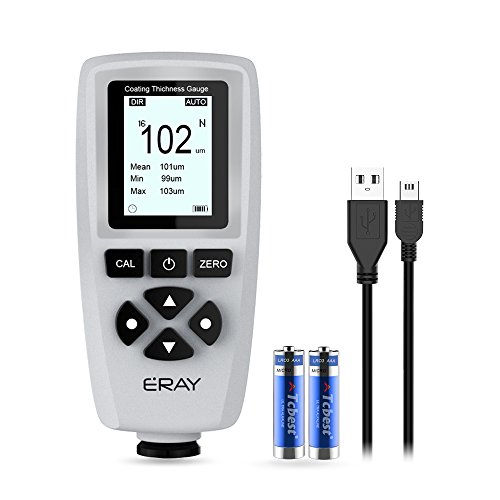
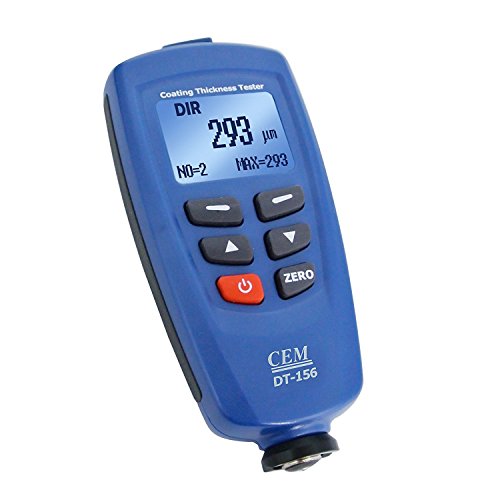
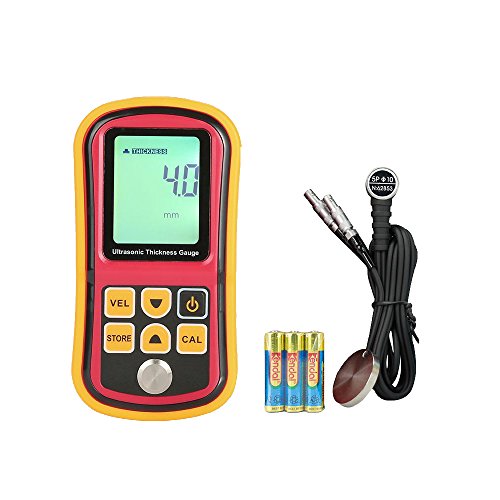
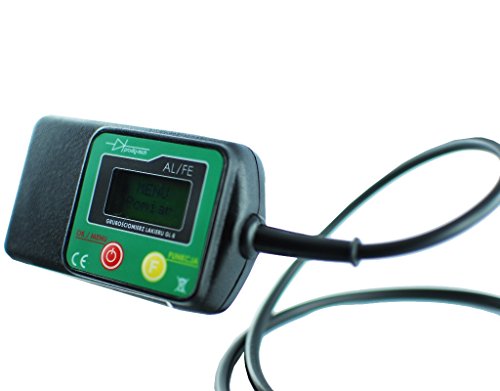
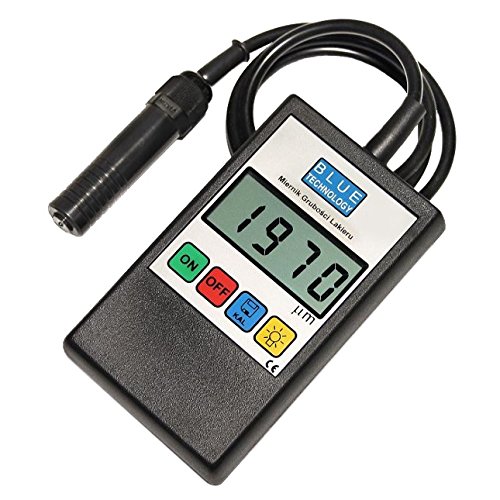
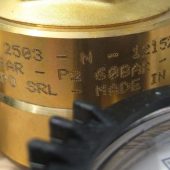

Hi, nice article.
Can you tell me please, is there a paint depth gauge for glass fibre body panels?
I can’t seem to find any mention of such a device.
Regards,
Alex.